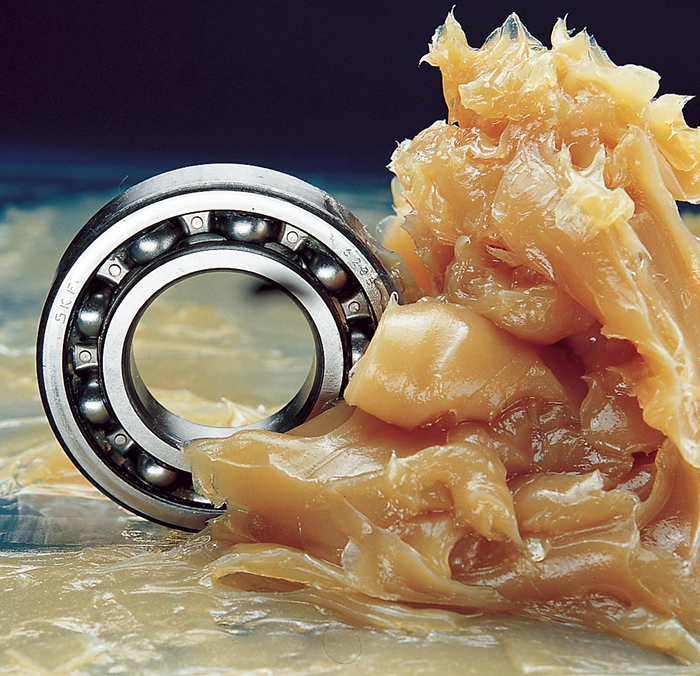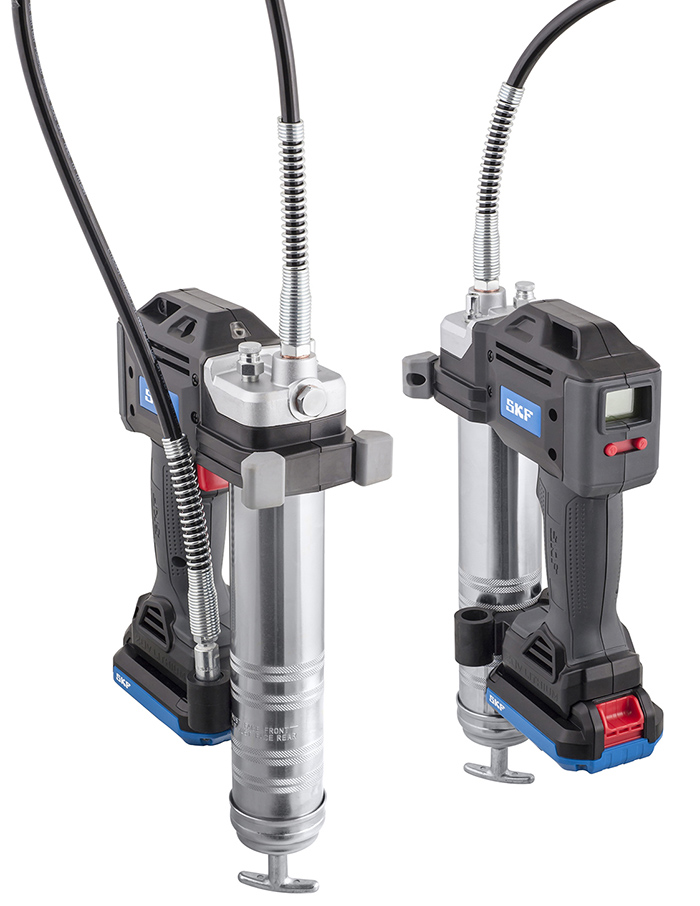Proper lubrication of rolling bearings in rotating machinery—pump systems included—is essential in realizing optimized performance and reliability. Whether grease or oil, lubricants serve to prevent wear and damage between a bearing’s rolling and sliding contact surfaces, reduce friction and heat generation, help protect against corrosion, and help keep out contaminants. The right lubricant for an application should always be supplied in the right quantity at the right time. This may seem intuitive, but adhering consistently to this practice can be challenging, especially when bearings are lubricated manually. Many manual-lubrication technologies—some quite advanced and user-friendly—have been developed to aid the process. But what if lubrication points are difficult to access? What if too much or too little lubricant is dispensed? What if the number of points requiring lubrication is especially high? Typically, there can be upwards of 7,500 individual lubrication points at a paper mill, 4,000 for a steel mill, 3,500 for a refinery, and 2,000 for a cement mill—all requiring service and vigilance over time.
 Image 1. Where feasible, grease is a preferred bearing lubricant, because grease is easy to apply, can be retained within a bearing’s housing and improves sealing against contaminants. (Images courtesy of SKF)
Image 1. Where feasible, grease is a preferred bearing lubricant, because grease is easy to apply, can be retained within a bearing’s housing and improves sealing against contaminants. (Images courtesy of SKF)Delivery methods
As one of the many handheld tools appropriate for manually lubricating bearings, rechargeable battery–driven grease guns offer portability, consistent performance and user-friendly interfaces to maximize efficiency and accuracy. With such a tool, lubricant flow rates can be precisely adjusted and an integrated grease meter will dispense the proper amount of lubricant to prevent possible over- or under-greasing. A visual display further assists users by showing battery charge level, amount of grease dispensed and blocked lubrication points. Image 2. The family of automatic lubrication technologies for bearings includes single-point lubricators to precisely deliver the correct amounts of contaminant-free grease to lubrication points.
Image 2. The family of automatic lubrication technologies for bearings includes single-point lubricators to precisely deliver the correct amounts of contaminant-free grease to lubrication points.- Automatic lubricators. These inject the precise and correct amounts of contaminant-free grease at single or multiple lubrication points. They inherently minimize the risks of over- or under-lubricating and can supply lubricant 24/7 for periods up to a year as governed by a pre-set timer. These lubricators will easily control the amount of grease used in each application.
- Single-line systems. In this centralized configuration, a central pump station automatically delivers lubricant through a single supply line to a lubricant metering device. Each metering device serves one lubrication point and can be adjusted to deliver a precise amount of grease or oil. Such systems can service one machine, different zones on one machine, or several separate machines, and can allow for expansion.
A single-line system can pump long distances and operate within a wide temperature range. And even if one lubrication point becomes blocked, the system continues to operate. System components include pumps; devices for metering, control and monitoring; and accessories. The system components will differ in size and design, depending on the lubricant (oil or grease) required for the application. - Dual-line systems. These centralized systems are designed for large machines with many lubrication points, long lines and harsh operating conditions. They use two main lines that are supplied alternately with grease or oil.Such systems are engineered to deliver lubricant to hundreds of points (and distribution points may be added or removed as necessary).
System layout consists of the two main lines and respective secondary lines and fittings, an electrically or pneumatically driven pump with a reservoir, dual-line feeders, solenoid valves, and pressure switches or transmitters for a main-line monitoring and control unit. - Progressive systems. These dispense small measured amounts of lubricant at frequent and intermittent intervals while machines are operating. The grease or oil flow created by the system’s pump is proportioned by progressive metering devices and distributed to each lubrication point according to need.
Such centralized systems represent a relatively simple and inexpensive method of automating the lubrication process for machinery in service.
Progressive systems include a pump connected to at least one primary metering device. If needed, second-level metering devices can be connected to the outlets of the primary metering device to increase the number of lubricated points.
 Image 3. Where manual lubrication is practical, rechargeable battery–driven grease guns are one of the newer technology options offering portability, accuracy and user-friendly operation.
Image 3. Where manual lubrication is practical, rechargeable battery–driven grease guns are one of the newer technology options offering portability, accuracy and user-friendly operation. Image 4. No single “universal” lubricant exists for all application scenarios and partnering with a knowledgeable specialist can help in selecting the ideal lubricant for the job.
Image 4. No single “universal” lubricant exists for all application scenarios and partnering with a knowledgeable specialist can help in selecting the ideal lubricant for the job.
